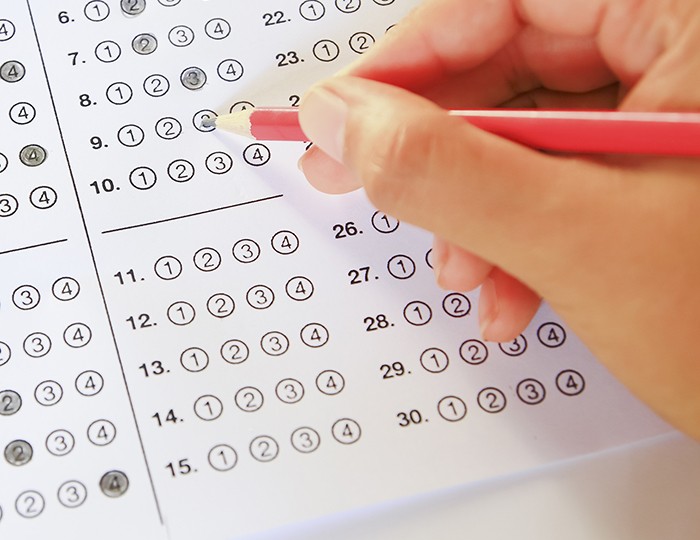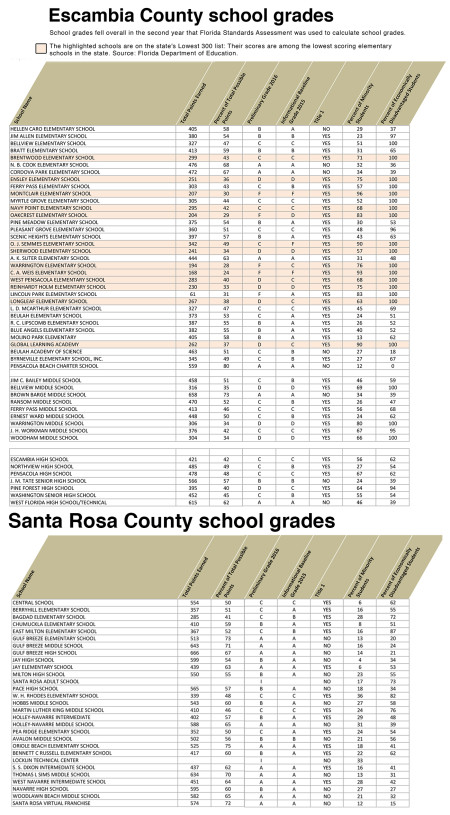School grades slip locally
- July 11, 2016
- / Shannon Nickinson
- / education

The Florida Department of Education released school grades Friday.
The grades are based on the results of the Florida Standards Assessment, the state standardized test that replaced FCAT.
It is the second year that grades were calculated using the FSA and they dropped in both counties. Statewide, the number of schools earning an “F” dropped by approximately 50 percent from 204 in 2014-2015 to 103 in 2015-2016.
Additionally, 58 percent of schools that earned a “D” or “F” in 2014-2015 improved by at least one letter grade in 2015-2016. Overall, a total of 1,137 schools maintained an “A” grade or increased their grade in 2015-2016.
Thirteen elementary schools in Escambia County are on the state's "Lowest 300" list: It is a list of the lowest scoring elementary schools in the state. All are schools that serve low-income students.
Clearly we have a long way to go toward helping our students growing up poverty.
In March, the nonprofits Education Cities and Great Schools, with funding from the Michael and Susan Dell Foundation, ranked the top 100 cities in America according to how they close the "achievement gap" — the research based gap that shows poor children hear fewer words than their more affluent peers. The gap can influence how poor students perform in school and on standardized tests.
The report used rankings based on how many low-income students scored proficient on standardized tests compared to all students who took the test.
Schools in Miami and Hialeah topped those ranking for how they closed the gap for many of their low-income students. Pensacola is not among the cities ranked in that study because its population isn't large enough.
Several of the schools mentioned in the Miami Herald story about the rankings were charter schools; many touted their small group tutoring services for both struggling students and those who aren't struggling academically.
Ethan Gray, founder and CEO of Education Cities, said the rankings provide a starting point to ask questions about what’s going on in individual schools — and how to replicate successes.
“There are a lot of stories to be told. The Education Equality Index is just scratching the surface,” he said. “When it comes to individual schools and why they succeed or why they struggle, that’s not a question we were able to answer.”

 CivicCon launches with a look at good growth in cities
CivicCon launches with a look at good growth in cities
 Building stronger brains one baby, one parent at a time
Building stronger brains one baby, one parent at a time
 SCI debuts commercial on Early Learning City
SCI debuts commercial on Early Learning City
 Entrecon: World class speakers and an opportunity to sharpen skills
Entrecon: World class speakers and an opportunity to sharpen skills
 PYP Quality of Life survey 2017
PYP Quality of Life survey 2017
 EntreCon Pensacola 2016: A look back
EntreCon Pensacola 2016: A look back
 Leadership tip: getting better employee takeaways
Leadership tip: getting better employee takeaways
 Leadership tip: be interested instead of interesting
Leadership tip: be interested instead of interesting
 Leadership tip: delivering difficult messages
Leadership tip: delivering difficult messages
 Brain Bags boost Arc, Early Childhood Court programs
Brain Bags boost Arc, Early Childhood Court programs